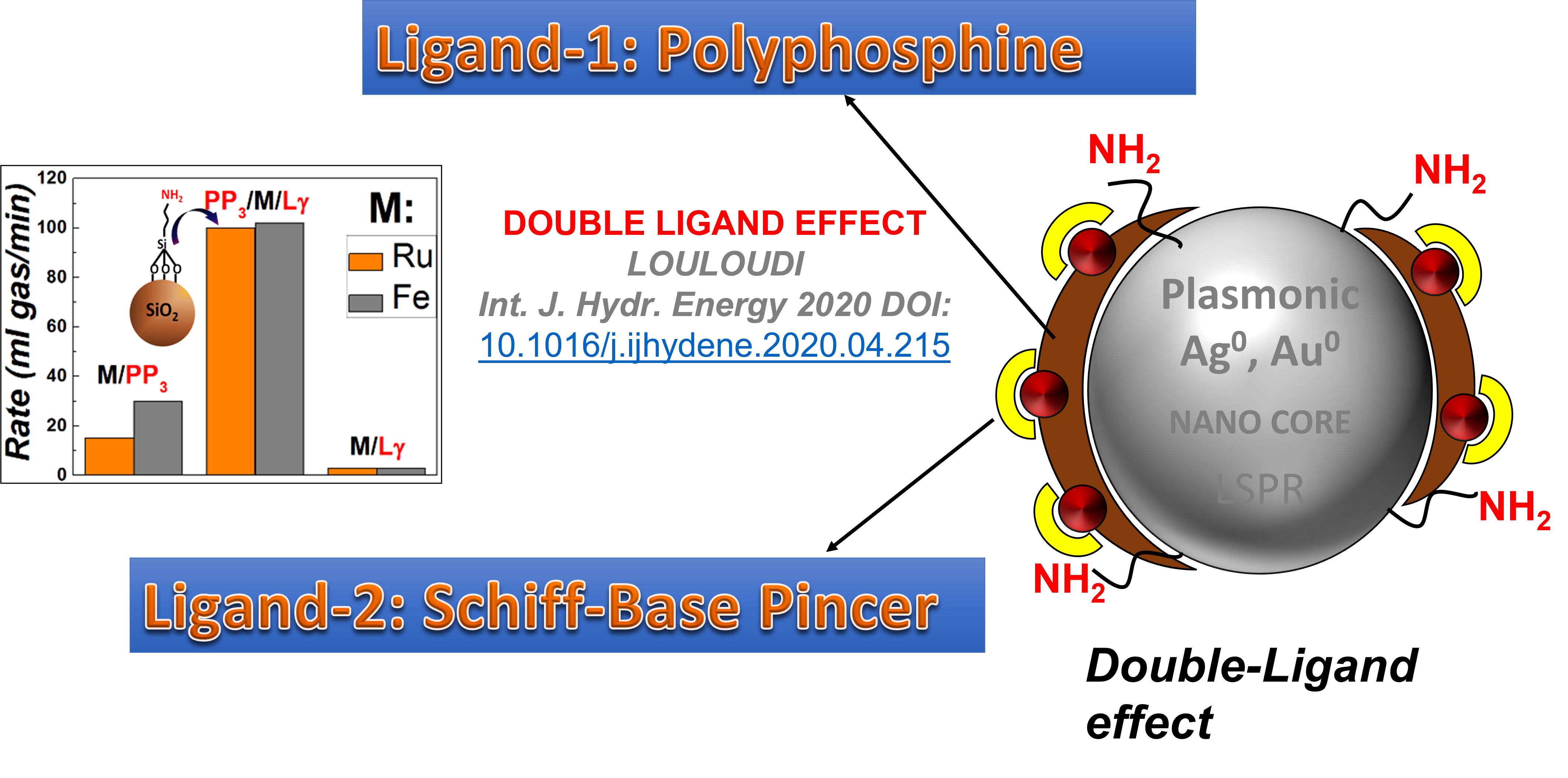The present project C1H2 aims to combine & advance three technologies to engineer innovative hybrid catalytic nanoscaffolds for H2 production by simple C1 substrates.
[i] The novel concept of Double-ligand molecular catalyst has been –so far– exemplified by us for two metals (Ru, Fe) and certain combinations of L1, L2 ligands (i.e. a Schiff-base with mono-Phosphine) (10.1016/j.ijhydene.2020.04.215). Within C1H2, we explore/optimize this concept for other metals/other types of ligands. For comparison, Ru and Ir metals, which offer better catalytic activity have been used for decomposition of more energy-demanding substrates, like methanol. We consider that the use of polymeric phosphines have been paved a novel approach in the ligand-design concept.
[ii] The beneficial concept of covalent attachment of the catalyst and the co-catalyst has been –so far– well documented for grafting on SiO2 particles (https://doi.org/10.1016/j.apcata.2015.03.029) . Within C1H2, we will interconnect the benefits of covalent assemblage with the well documented benefits of the plasmonic/LSPR technology i.e.by grafting on Ag nanoparticles
[iii] The targeting of continuous-operation/long term stability is –so far– at its infancy. Within C1H2, we will try to advance this challenge to other catalysts i.e. Fe-, Ru-based (i.e. we have encouraging results by our Ru-polyphosphine system at specific solvents). Soft-chemistry-based processes (i.e. chemistry at ambient conditions) for which substrate-specific molecular catalyst [SSMCs] are eminently suited, clearly offer innovative strategies to obtain in situ tailored hybrid metal complexes. These fulfil key-aims of “green-chemistry & green-technology”


